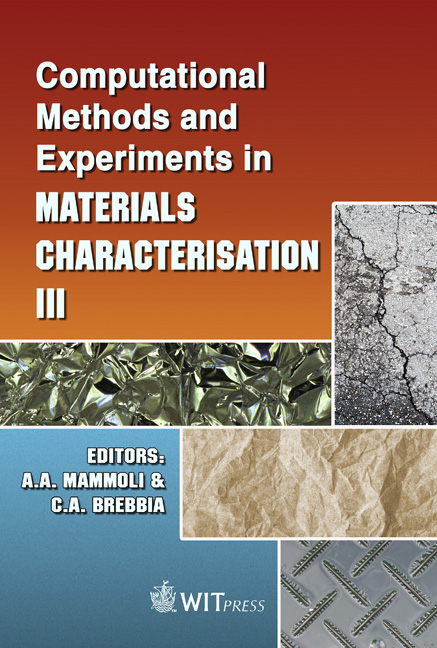Towards 3D Simulation Of Sintering Processes
Price
Free (open access)
Transaction
Volume
57
Pages
10
Published
2007
Size
1,233 kb
Paper DOI
10.2495/MC070431
Copyright
WIT Press
Author(s)
S. Bordère, D. Bernard, S. Vincent & J.-P. Caltagirone
Abstract
The Monte Carlo approach based on minimisation of a potential including interface and volume energies has been implemented in the framework of a Eulerian interface tracking method in order to deal with 3D sintering of complex powder compacts. First applied to the unique spherical particle system, these new developments lead to a surface tension-induced pressure close to that theoretically given by Laplace’s law. The accuracy of this result is largely improved compared to those given by a classical fluid mechanics computation using the front tracking method. Our progress towards 3D modelling of sintering for realistic systems is illustrated by the computed stress gradients induced by surface curvature gradients within a small set of particles extracted from X-ray computed micro-tomography images of a real sample. Keywords: stochastic methods, ceramics, image analysis. 1 Introduction As regards the recent studies in modelling sintering processes [1–4], one can notice that it still remains difficult to deal with realistic particle arrangements systems. In fact, modelling of polycrystalline material sintering has only been handled in 2D [1, 2]. The only approach which would be powerful enough to overcome that difficulty is the phase field approach which is based on a diffuse definition of the interface [2]. Applied to 3D complex microstructure evolution only involving grain growth [5], no example of 3D many particle densification has up until now been shown. In the case of amorphous particles sintering, only 2 [6, 7] or 3 particles were handled [8]. Apart from these deterministic methods, the Monte Carlo simulations based on the Potts model have exhibited 3D
Keywords
stochastic methods, ceramics, image analysis.





